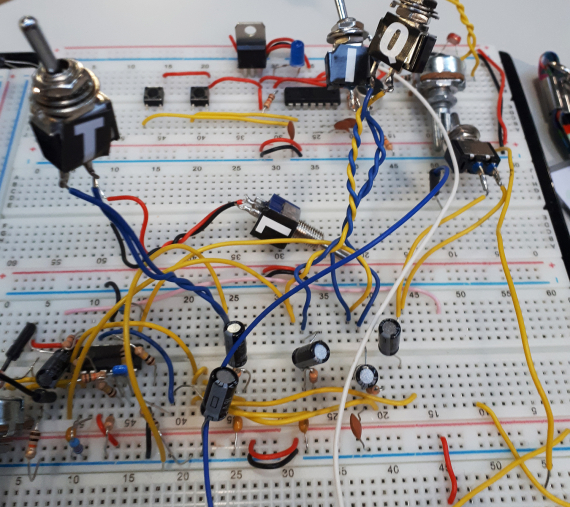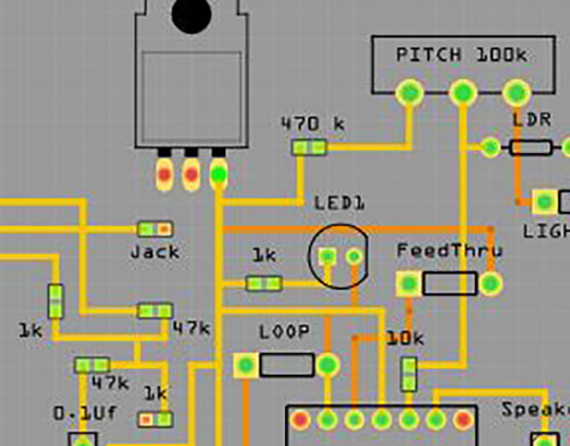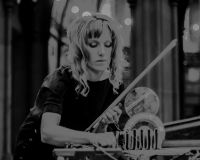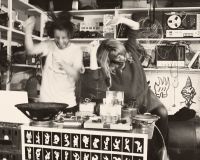Posted on Sat 16 Dec 2017
Technical Development
Circuit design for first user tests

Posted by
Project
Previous to our PM Studio residency we had undertaken an intensive Innovate UK funded R+D period to develop our Noise Machines for and with electronic musicians to test out interdisciplinary modes of performance with light. As well as developing eight new Noise Machine circuits throughout the project, one key strand had been developing our education offer through refining our DIY Kits. These kits are our A1 light Theremin kits and this year we have worked with over 400 participants to create their own take away Noise Machine. Through working with many age groups and in different settings we found that in each session individuals in the group would begin to improvise with each other, there was organic collaboration within the sessions and we were constantly surprised by the easy entry level and satisfaction participants got from the sessions as a way in to music making.
We became interested in how each person with their kit produced one single tone and how on mass the harmonic content multiplied to create a wall of noisy sound, each individual contributing to the whole noise floor.

It is these DIY kits that are the starting point for the PM Studio residency tech development. Each kit works using a digital logic 40106 IC Chip with the potential of producing 6 square waves. We are aware of how these sounded on mass – loud and for some; fairly harsh sounding frequencies! With the prototypes we are building at PM Studio for SWARM, we wanted to include a range of waveforms which would enable us to test out not only different wave shapes, frequencies and harmonic content but how these operate on mass and in different spaces. Our new modules use op-amps and therefore output three analogue waveforms ; a square wave, a triangle wave and a sine wave, all responsive to light. This represents the oscillator/waveform side of our circuit and unit
The other aspect to our circuit is the inclusion of a sampler. Using a fairly lo-fi sampler chip and an electret mic we can sample between 8-20 seconds of environmental audio, this audio can be looped, played as a one shot and the pitch varied with light.
These two areas of the circuit represent technically what we are looking to explore acoustically and collaboratively; the oscillator section will send frequencies out into the environment and the sampler section will receive acoustic information from the environment, this represents our idea of the participants of the sound walk being involved with a sonic dialogue with their city. Sounds will be influenced by the architecture of the built environment for example the reverberations of particular building materials and the physical structures such as domes, arches or flat surfaces as well as light and the public who are within the space. We are working towards a methodology on our location choices, routes and designing a user experience for the walks.

We have been deep in tech development/making a mess in the maker area at PM Studio and progress is good! The circuits will have a mixer section and ampilifier and an inbuilt speaker that will be fairly directional, the portability means users will be able to direct and position the machines towards different light sources and project sound in different configurations as individuals or collectively.
Next steps are to make multiples ready for testin with human beings in January, we are currently sketching up our PCB designs and layouts.

